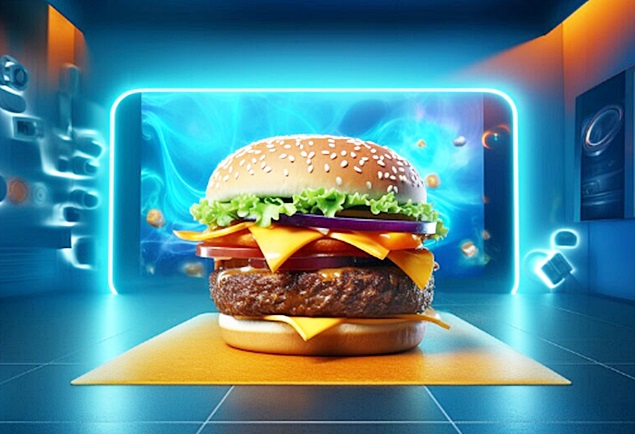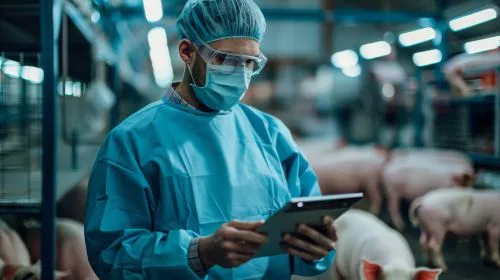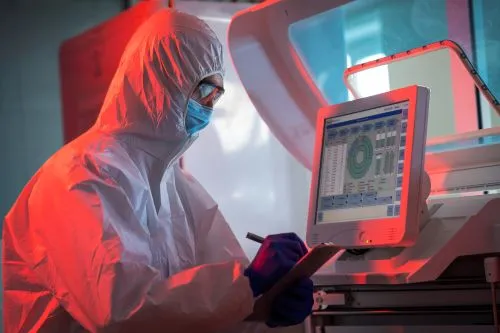1039

Artificial Intelligence Boosts Food Innovation, but Human Expertise Remains Essential
In the food sector, artificial intelligence (AI) is enhancing efficiency across all areas. According to FoodNavigator, AI can help identify food trends, support research and development of new products, and even facilitate communication with consumers.
AI Drives Product Formulation and Development
But what if your product isn't on the market yet because it’s a novel food? Can AI help bring such innovations to commercialization?
Yes, it can. When working with a new ingredient, assessing nutritional values, texture, shelf life, and sensory characteristics can be both time-consuming and costly. This is where AI comes in.
An increasing number of companies are using AI to simulate and predict how ingredient combinations will behave based on these factors—saving both time and resources. What once took weeks can now be done in minutes.
“This can significantly reduce lab work and speed up R&D timelines,” explains regulatory consultant Stephen O’Rourke.
This is echoed by Katia Merten-Lentz, lawyer and founding partner of Food Law Science and Partners. “AI can not only optimize formulations for taste and texture, but also enhance production processes,” she says.
Predicting Consumer Preferences
Once a novel food is ready for the market, it requires pre-market authorization from a food safety authority, such as the European Food Safety Authority (EFSA). Any such authority will need to ensure that AI models have been validated against observed data.
Regulators also demand “full transparency” regarding the data fed into AI models, how the models were trained, and how predictions were verified, explains O’Rourke. If an AI model’s decision-making process is opaque, the application is likely to be rejected.
That doesn’t mean food safety agencies like EFSA are against AI. Quite the opposite, says O’Rourke: “There’s a perception that EFSA discourages AI use, but in reality, they’re open to it—provided data sources are transparent and the models are well-justified.”
What Makes a Food “Novel,” and How Is It Assessed?
When submitting a dossier for a novel food, companies must demonstrate a deep understanding of how the product functions.
“If it's a protein—as with many recent novel food proposals, such as cultivated meat or precision fermentation-derived dairy—large language models (LLMs) can analyze complex datasets, amino acid profiles, and reveal the functional properties of the new protein,” explains O’Rourke.
When fed with high-quality data on specific proteins, LLMs can also synthesize information to predict how consumers might digest the novel food—a particularly relevant factor when introducing unfamiliar ingredients.
Merten-Lentz also sees potential in AI for optimizing the selection of alternative proteins. “AI can analyze all known proteins faster than any human,” she says.
This capability allows producers of plant-based meat or dairy analogues to pinpoint the exact protein needed for nutrition, color, flavor, or texture.
“This process is often combined with precision fermentation, which offers a broad scope for customized products,” adds Merten-Lentz.
Simulating Exposure: An Emerging Application
Another emerging field is AI-generated exposure assessments. Some companies are already using AI tools to simulate food intake scenarios across different population groups, helping to speed up safety assessments in regulatory submissions.
Still, regulators continue to demand full traceability of data sources, assumptions, and methodologies behind such models—transparency remains essential, O’Rourke stresses.
“LLMs don’t replace lab experts, but they do accelerate early-stage data synthesis—freeing up time for new projects.”
Humans Still Matter in Novel Food Applications
So, with AI in play, do people still matter?
The real value of AI becomes apparent when humans recognize their limits in processing vast amounts of data.
Humans are still essential—but in a different way, explains O’Rourke. “It’s not about replacing people in the lab—they’ll always be needed. AI complements their work.”
Both lab and regulatory experts must still perform final reviews of AI-generated findings. This final step is critical. Only human analytical minds can determine whether AI-derived data is usable—or if the system has “hallucinated.” Humans must “refine” the output, says O’Rourke, and ensure it meets standards.
AI Warning: Protect Sensitive Data
When working with AI and LLMs, protecting sensitive or confidential information is crucial. “Sensitive data should never be uploaded into cloud-based LLMs,” O’Rourke warns.
If using AI to process confidential information is unavoidable, companies should rely on internally hosted, secure models. This helps ensure that sensitive data remains protected. Even then, O’Rourke emphasizes that such use should be limited to confidential projects.
“Data confidentiality, integrity, and compliance remain paramount when using AI tools,” he adds.
Verification still takes time—possibly half a day—but it saves an entire week’s worth of manual data analysis that AI can complete in days. “This frees up staff to begin a new project,” O’Rourke explains.
Merten-Lentz fully agrees, emphasizing that AI is not accurate enough to replace scientific and regulatory experts.
“Although AI can accelerate food innovation, never forget that strategy should still be human-led. Ultimately, products are chosen emotionally by consumers—something AI, at least for now, cannot truly understand.”
(Photo: Freepik)




